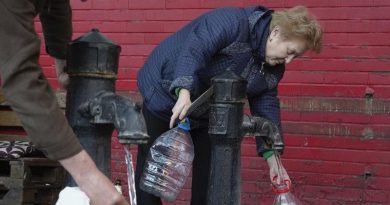Children robbed of their future amid failures to protect NSW’s most vulnerable
Save articles for later
Add articles to your saved list and come back to them any time.
Key points
- There are 15,000 children in state care.
- Reports of risk and harm are going ignored, with more than 9000 child protection reports not being assessed by the Department of Communities and Justice.
- Half of all children spend over five years in state care before exiting the system, a rate four times higher than the national average. Two hundred of these children were housed in six or more placements.
- DCJ estimates an extra 600 foster carers are needed each year to take care of children who cannot live safely at home.
NSW’s child protection system is failing on several fronts, with a severe shortage of caseworkers and foster carers, delays in investigating reports of children believed to be at risk and an over-reliance on emergency accommodation.
A months-long investigation by The Sun-Herald has revealed vulnerable children can spend years in the system, not only robbing children of their childhoods but placing a massive financial burden on taxpayers, costing the state $3.1 billion annually with experts warning intervention failures are driving up costs.
A number of caseworkers, speaking on the condition of anonymity to protect their employment, said staff shortages, a growing requirement to undertake administrative asks, and ever-thinning budgets were undermining their ability to meet the needs of the vulnerable kids.
In the third quarter of the 2023 financial year, the caseworker vacancy rate jumped to seven per cent, according to DCJ data, with the rate hovering at 15 per cent in the Mid North Coast, New England, and northern NSW.
In both Sydney’s west and south-west, the vacancy rate was about 10 per cent.
The stressors of the job were compounding the workforce shortages, with 50 caseworkers on long-term compensation in the last financial year, according to data obtained under freedom of information.
The inability of caseworkers to respond to overwhelming demands is evident through the number of children seen by authorities once they are at Risk of Significant Harm (RoSH), meaning there is sufficient concern to warrant a response by a statutory authority regardless of the family’s consent.
Of the 112,500 reports made from January last year until March 31, just one in four were being seen within the designated 28-day time frame. This inability to meet demand was most apparent across the Mid North Coast, New England, and northern NSW and Central Coast and Hunter, where less than one in five cases were being seen.
The consequence was a failure to respond to the most serious reports of child neglect or abuse within the required response times: level one within 24 hours; level two in 72 hours; and level three within 10 days. Often, children are being seen weeks after the most serious reports are made.
Once the 28-day period expires, the case is closed due to competing priorities.
A letter sent from Public Service Association regional organiser Thomas Hooper to Department of Community and Justice deputy secretary Simone Czech on August 8 after a three-month tour Community Services Centres detailed how these issues were manifest in the state’s west.
The letter, obtained by this masthead, relayed how severe staffing shortages in Walgett, in the state’s north, meant police were undertaking welfare checks on children, with caseworkers responding to level one reports up to three weeks later because of an overwhelming caseload.
“This was deemed adequate child protection practice for children in the west,” he wrote.
“No information was given as to how often police welfare checks were conducted and what information, if any, the police collected. I believe this is allowing reported child abuse to continue placing children at RoSH by Community Services.”
As of late March, more than 9000 child protection reports had not been assessed by a DCJ caseworker.
Representing children and young people who had been through the nation’s out-of-home care system, Create Foundation chief executive Jacqui Reed said unmanageable caseworker workloads were manifesting in potentially fatal situations for vulnerable children.
“That’s when you see kids severely hurt or sometimes killed as a result of these things, and that their cases are horrendous,” she said.
“What we’re not doing is fixing the fundamentals where the response rate can be dealt with in a response time that’s humanly possible. If you don’t have the staff, it doesn’t matter what you’ve written on a piece of paper.”
Reed said caseworker shortages were being hidden by governments as caseloads were distributed among an ever-thinning number of staff.
Increasing and unmanageable workloads were also delaying children court’s matters, as caseworkers were required to pull together thousands of pages of documents.
Departmental sources said some cases were being delayed by two to three years, with caseworkers being forced to ignore magistrate orders.
But the extent of the delays remains unknown, with DCJ responding to freedom of information requests seeking the number of matters delayed by saying they did not collect the information.
The foster care system is failing
The foster care system is in crisis, with the DCJ estimating an extra 600 foster carers are needed each year to take care of children who cannot live safely at home, with an ageing foster carer workforce.
Last week, Family and Communities Minister Kate Washington called for more people to become foster carers to address the shortage.
Documents released under freedom of information revealed as of June 30, there were 1264 children and young people placed in foster care and relative-kin carer households that included a carer aged 70 and over.
Of the 15,000 children and young people in the NSW child protection system, just a third are placed with foster carers. There were 400 fewer children placed in foster care in the first quarter of this year when compared to the same period last year, a decrease of 6.1 per cent.
NSW Director of Foster Care Agency Key Assets James Isles said the drop in foster carers was driven by the high cost of living, increased bureaucracy and communication issues during the recruitment process and a lack of support for some carers.
“Having to manage the day-to-day challenges of dealing with traumatised children with behavioural issues is emotionally and physically demanding, so there’s stress and burnout,” he said.
To become a foster parent, applicants have to undergo background checks, criminal checks and health and medical checks; they have their homes assessed; provide personal referees; undergo multiple interviews; and are continuously assessed.
Data from the Productivity Commission report found around half of the children on a care and protection order had spent more than five years in care in NSW, a rate four times higher than the national average.
Of the nearly 1300 children who had spent more than five years in care and exited the child protection system in 2021-22, more than 200 had been in six or more placements.
Foster care charity Barnardos chief executive Deirdre Cheers said the government wasn’t meeting its targets on prioritising restoring children to the care of their families within two years when safe to do so.
The result was children being bounced from home to care repeatedly, while adoption rates have halved since 2020 down to their lowest level on record with just 208 adoptions nationally in 2021-22.
“[One factor is] the reluctance of government child protection workers to put the needs of vulnerable young children first, even when a Children’s Court has ordered that a child can never be safely returned home,” Cheers said.
“When a child enters out-of-home-care is the crucial time to make a difference by making the best assessment for the Court, so that the best ‘all of childhood’ plan can be made.”
Dozens housed in hotels and motels
Once there is nowhere for an out-of-home child to go, the state turns to Alternative Care Arrangements (ACA), placing them in hotels, motels and holiday accommodation 24 hours a day, seven days a week to be overseen by labour hire workers.
There were 126 children in ACAs, which are run by non-government organisations and the department, as of June 30, according to DCJ data, above the monthly average of 119 between October last year and March.
The churn of unfamiliar people in an alien place is anathema to the consistency needed to deliver therapeutic responses, and the serious risk of ACAs is children having their trauma compounded, warns OzChild chief executive Lisa Griffiths.
“Some kids jump straight into these settings. What begins as ‘two nights tops’ ends up being weeks, months or sometimes years given the perpetual demand and pressures on the system,” she said.
“Caseworkers can only manage so much, so they place children there temporarily but are swamped by the throughput of other cases and ultimately lose it.”
ACA models cause children’s behaviour and wellbeing to deteriorate, a recent government review found, and come at an eye-watering cost: the average annualised cost was $841,000 per child, according to answers provided to state parliament.
In one instance, a group of siblings each spent 444 nights in an ACA.
From December last year to May, ACAs cost taxpayers $54.6 million. On Wednesday, the state government announced a $200 million funding lifeline to sustain the emergency care arrangements for another year.
Washington said she was committed to driving up caseworker and foster carer numbers and reducing the number of kids housed in hotels.
“We must reform the child protection system, so caseworkers are supported to give vulnerable families the help they need and deserve,” she said.
“But the solutions aren’t simple. The system was left to spiral out of control for years, so it will take time to turn it around.”
A DCJ spokesperson “commended” voluntary foster carers for their compassion and selflessness.
Start the day with a summary of the day’s most important and interesting stories, analysis and insights. Sign up for our Morning Edition newsletter.
Most Viewed in National
From our partners
Source: Read Full Article



